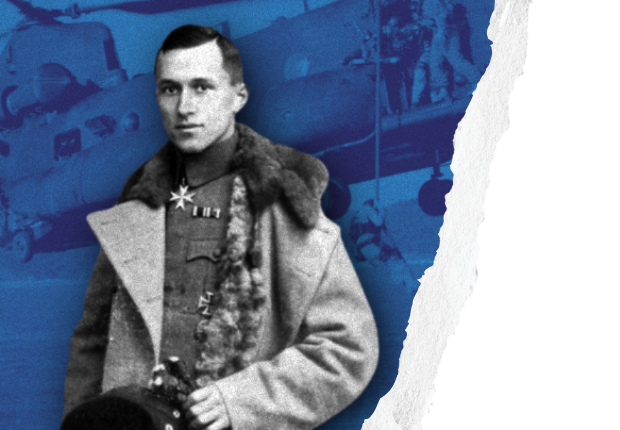Visions of Tomorrow’s War
The sun was just beginning to rise over the distant hills, but the light of day had yet to break the horizon. Osric stood in the glade; glancing left to right at his battle buddies. Each man had prepped his gear, but the ritual was repeated by one man then the next. Months of training had developed that good habit. Osric pulled back the bolt of his rifle. A round was chambered. Everything was ready. They only awaited the captain’s call.
The trees on the edge of the glade stood perfectly still. There was no wind. This was good. Nothing to disrupt their jump. Sounds resonated from the forest. The enemy lurked within, buried deep in their trenches. A smoldering armored vehicle lay ahead of the tree line. A testament to the deadliness of the enemy’s rocket launchers. It was why no helicopters or jets soared in the skies above. They were easy prey. Osric and his company would have to push on without their help.
Set one of the orders came over the radio, “Ready weapons.”
Order number two came next, “Strap up.”
Osric leaned back and swung his arms through a series of nylon ropes and straps. It fitted in such a way that with a single pull and latch the hulk of plastic behind him was secure to his back.
Order number three came, “Deploy wings.”
Each man pulled a lever that unlocked a spring-loaded set of arms from the contraptions they wore. The noise had been loud, the enemy likely heard it, but it was too late. There was no stopping what was coming.
The fourth and final order came over the radio, “Charge.”
Osric was catapulted from the earth, ascending over the tree line in a swarm with his comrades. Small polymer rotor blades spun from the contraption. They buzzed like a bee. The radio pieces in Osric’s ear filtered out the noise. He clearly heard his team leader guiding them into place.
The drone on his back was operated from a control panel that could be steered with one hand. His other hand tightly clutched his rifle. The strap held it to his body, but he would need it immediately upon landing and didn’t wish to fumble it. It only takes half a second to get killed.
He dared not fire while in the sky. The recoil could off balance the drone and send him hurtling to the earth. Such a fall would end in his body broken and a team of enemy executioners putting a bullet in his skull, if he wasn’t dead already. For now, he was an easy target, but he was not alone.
The swarm of flying infantry passed right over the enemy trenches. As individual soldiers, they were weak, easy to kill, but surprise and speed were on their side. Their sudden attack wasn’t noticed until it was too late, and only a few enemy rocket-launcher teams were able to respond. A small flurry of missiles soared from the earth, but only two hit anything, the others passed by harmlessly. The two men hit were obliterated in a splash of gore and fire. Osric would remember where that rocket had come from when he landed.
Nothing could be done to stop the swarm. Enemy machine guns and rifles turned towards the sky, but they were lost in the dim light of sunrise. A flurry of lead scattered through the sky, and a few hit their mark. Three more men fell from the sky, but the swarm still advanced. Nothing could stop an entire company of flying drone infantry.
By now they were over the enemy trenches and advancing on the enemy command post. There were fewer defenders here, and only a scattering of pop shots with rifles and pistols opposed them. Nothing their polymer armor couldn’t stop.
Orders came from the commander, “Descend.”
Field orders had to be simple and quick. They’d rehearsed the mission and studied the topography, and Osric was already in the process of landing when the order went through.
He touched down some 40 meters from his team leader. The other members of the team were also spaced out from him. While in the sky they had seemed closer. No time for dwelling on such nonsense, Osric detached the drone from his back and charged into the fight. They’d bypassed the enemy infantry; nothing could oppose them now. A friendly armor attack on the main line would distract the main enemy force long enough for Osric’s company to destroy the command post and fly back to base.
Sometimes fiction serves as the best medium to express an idea. You’re much more likely to inspire the imagination and genius of another through a piece of art. I won’t say what I’ve presented here is high art by any means, but I believe it best conveys what I believe the future of infantry on the battlefield might look like. I dream of teams of soldiers with small drone packs that can deploy on and off the battlefield in a sudden and unexpected swarm. It’s my opinion that warfare is already moving in this direction, and it’s my hope to perhaps inspire engineers among the readers to build such weapons of war that I have envisioned.
The wars of tomorrow will be won by he who can move the most. Mobility often defeats armor. The failure of the Maginot Line in the second world war serves as an example of the importance of movement over armor, but we have seen it again in the wars in the Ukraine and Gaza. This idea has developed and simmered in my head for years now, since I was a young soldier, but it is only now in the wake of recent wars and a reading of Ernst Jünger’s Copse 125 that I feel able to express why I believe this vision to be the future of infantry.
As a boy, I idolized the military. The glory, the aesthetics, the violence, and I developed a healthy obsession with reading personal war stories. I distinctly remember getting in trouble for reading some of General Patton’s more eccentric poetry in front of the class. My idolization of the military was quickly shattered after going through all the medical checkups before basic training. I was shocked by the complete incompetence and stupidity of the military system. Needless waiting, endless forms to sign, and obese clerks with no sparkle behind their eyes. I was horrified.
Through the military I met both the dumbest and smartest people in the world. There was nothing in between! My time in the infantry (I was one of the dumb ones) was mostly boring, but I learned a lot about how the military wanted to function. I learned basic wedges and files, how to clean a toilet, and most importantly I came to see some of the weaknesses of armor. The infantry of today is almost entirely mechanized infantry, with a few holdouts scattered in the Marines. These mechanized vehicles move in great convoys, like the wagon trains of the wild west. Men hole up inside these machines while machine-gun turrets keep the enemy at bay.
This is all well and good, but vehicles cannot go everywhere. I remember looking at the splattered corpse of a sergeant who was crushed in a needless tank rollover. The investigators left him under there to rot for three days before they finally got his body out. Where I’m going with this story is that armor doesn’t belong in certain places. There will always be rough country better suited to light infantry.
We have seen another major weakness of armor and mechanized forces recently in the initial Russian invasion of the Ukraine. The Russian army surged into Ukraine with a massive assault that nearly surrounded Kiev in less than a week. Russian armor commanded the highways, and it seemed the war was already over. A two-week adventure, in and out! Some even thought that the invasion had surpassed the magnificent maneuvers seen in Operation Desert Storm. But the Russians were beaten back. Their great convoys of tanks and vehicles were subjected to the pestering fire of Ukrainian infantrymen armed with American javelin missile systems. Tanks, cars, and even helicopters were obliterated in short attacks by small teams of just a few men. A new type of dragon slayer first developed by the Mujahedeen and now refined for use against the Russians…again. The Russians couldn’t do anything about this, the Ukrainians were too far away, and no armor could pursue them into the hills. Only infantry could’ve hunted the Ukrainians down, but the Russians had no light infantry to support their armor.
You might think this is a love letter to the infantry, but it is not. Infantry has its failures too. For one it is slow, needing vehicles to back it up in the fast-paced mechanized world we live in. When you take away the vehicles, as can be seen in how the war in Ukraine has developed, the battle turns into a slog of trench warfare. The lines don’t move, stormtroopers kill dozens in their blitz attacks, and drones drop grenades from the sky in a display of the power of petty technology over man. We’ve all seen the videos of both Russians and Ukrainians killed by drone grenades. But the terror of the drone is only just beginning to be understood.
The recent attacks by Hamas in Israel in October of this year showed a new development in warfare that I believe will be the future of infantry. Hamas terrorists flew right over Israel’s border wall, where armed soldiers are always stationed, in a small swarm of paragliders. Had the Israeli airforce been deployed in time, they’d not have been able to shoot down every Hamas glider. By the time the Israelis were able to respond, Hamas had already murdered over a thousand people. These people were not killed from the air, but by terrorists who quickly landed and exited their gliders to fight as regular infantry on the ground. Hamas outmaneuvered the Israelis and bypassed their superior entrenchments. As terrible as this attack was, killing many civilians, I believe it gives us a window into the future of soldiering. Swarms of sky soldiers surging over the enemy in a surprise attack, and then deploying onto the ground behind enemy lines. Essentially, this will replace helicopters as the main way of deploying troops. In a world where javelin missiles could kill an entire team of men in a helicopter, it is much safer to deploy each troop individually, or perhaps in teams of two or three depending on the technology that’s developed.
I want to conclude by examining a few passages from Ernst Jünger’s collection of journals from the First World War titled Copse 125. This work is very different from Jünger ’s more famous The Storm of Steel, but it is worth a read for those interested in military history or Jünger . In this book, Jünger theorizes that the next war would be a battle between tanks, which were still only just invented at the time he wrote. This passage here beautifully shows his views on the future importance of the tank in warfare.
“Mobility, fire, and cover are combined in it, as in the war elephants of the Diadochi, and the testudo of the Roman legion. For this reason and others too, in its further development it is bound to be the decisive engine of the battle of tomorrow with all other arms as its mere accompaniment.”
Jünger proved to be right, as the Second World War was a war of movement. The great tank battles on the eastern front put the Mongol hordes to shame in the titanic power behind each side’s monstrous charges. The tank became the battleship of the land, and its commanders became captains. Yet today the battleship is a relic of ancient history, made obsolete by carriers and now cruise missiles. Look to the sinking of the Russian cruiser Moskva in April of 2022. The landships of today are now threatened by personal rocket launchers in the same way the battleships are prey to shore launched missiles.
Jünger then looks beyond even the tank and predicts the coming of the helicopter during a time when aviation was still in its infancy.
“Beyond this it may be expected that the idea of mobility will reach the acme to which it is ever moving, in a fusion of the flying squadron and the infantry — in the shape indeed of a flying tank. This will be a heavy, low-flying machine adequately armoured against infantry fire, and designed only for the battle on the ground, while its capacity for flight will serve to bring it forward into action.”
Again, Jünger was correct with his prediction. I’m uncertain if his mind envisioned the form of a helicopter, but he certainly had the right general idea. Huey helicopters in Vietnam deploying entire squads of infantrymen on and off the battlefield in record time. Navy SEALs delivered directly into enemy compounds to kill an international terrorist leader. The power of the helicopter is in its mobility.
It is my view now that we’re hurtling towards another shift in the technology of war. Just as our phones and computers have gotten smaller, fighting vehicles will shrink as well. I think small one-man drone helicopters will only be the beginning. Perhaps with the increasing strength of polymer, we might see body armor become lighter and more effective. Maybe some day we’ll see true Astartes, roided up super soldiers clad in advanced polymer armor with small drones to take them on and off the battlefield in terrible swarms. These theories might be farfetched, I am no genius like Jünger (I was in the infantry, as I say), but the shift in warfare away from expensive multimillion dollar vehicles has already begun. Wars will no longer need to be fought by nations with trillions of dollars behind them. You can 3D-print an entire Javelin missile launcher now.
The balance of warfare is shifting back towards the individual. What an opportunity that will be.
































